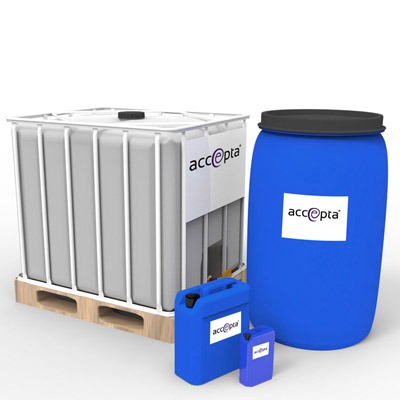A Comprehensive Overview to Executing Foam Control Solutions in Your Workflow
Reliable foam control is an essential facet of operational efficiency that frequently goes ignored. Comprehending the ins and outs of foam generation can dramatically impact both performance and product high quality. By checking out vital elements such as application compatibility and workers training, companies can enhance their foam administration efforts.
Understanding Foam Challenges
Foam difficulties are a significant concern across various markets, impacting operational performance and product top quality. The formation of excessive foam can prevent procedures such as mixing, transportation, and storage space, bring about raised downtime and waste. In industries like food and beverage, drugs, and petrochemicals, foam can hinder production lines, triggering item inconsistencies and contamination threats.
In addition, foam can obstruct equipment functionality, resulting in pricey repair services and maintenance. In wastewater treatment, foam can interrupt clarifier operations, resulting in lower treatment performance and regulative compliance issues.
Comprehending the underlying root causes of foam generation is crucial for reliable management. Aspects such as surfactants, temperature level fluctuations, and agitation levels can all add to foam manufacturing. Identifying these components allows markets to implement targeted strategies that decrease foam formation while keeping product honesty.
Types of Foam Control Solutions

Mechanical remedies entail the usage of gadgets such as foam skimmers or defoamers. These devices physically get rid of foam from the surface of fluids, consequently stopping overflow and preserving optimal degrees in activators and storage tanks. Chemical solutions, on the other hand, consist of the application of defoaming agents-- substances that disrupt the foam structure, leading to its collapse. These representatives can be silicone-based, natural, or liquid, each offering distinct benefits depending upon the application setting.
Last but not least, functional methods focus on process changes. This might entail customizing devices criteria, such as temperature and stress, or altering the flow rates of fluids to reduce foam generation. Furthermore, implementing good housekeeping techniques can also mitigate foam development by reducing contaminants that add to foam stability.
Selecting the appropriate foam control option includes examining the details needs of the operation, including the kind of procedure, the qualities of the materials entailed, and safety and security considerations.
Selecting the Right Products
Choosing the right foam control products calls for a comprehensive understanding of the details application and its one-of-a-kind challenges. Elements such as the kind of foam, the atmosphere in which it happens, and the desired end result all play pivotal duties in product choice. Foam Control. As an example, in markets such as food handling, it is essential to choose food-grade defoamers that conform with security policies while successfully taking care of foam.
Additionally, take into consideration the viscosity of the liquid where the foam trouble exists. Some items are formulated for low-viscosity applications, while others are tailored for thicker liquids. Compatibility with existing procedures is another crucial facet; the chosen foam control agents should incorporate seamlessly without interfering with total procedures.
An additional crucial element is the approach of application. Some items may require dilution, while others can be Foam Control applied directly. Assessing the simplicity of use and the needed dosage can provide insights right into the item's efficiency and cost-effectiveness.
Implementation Strategies
Successful execution strategies for foam control services need an organized strategy that aligns item choice with operational demands. The very first step involves an extensive analysis of the processes where foam happens, recognizing particular areas that demand intervention. browse around this site By engaging cross-functional teams, consisting of top quality, production, and design guarantee, organizations can collect insights that inform the choice of the most effective foam control items.
Next, it is critical to establish clear purposes for foam reduction, making sure that these objectives are quantifiable and attainable. This might include defining appropriate foam degrees and the timelines for implementation. Training workers on the properties and application approaches of selected foam control representatives is just as vital, as appropriate use is vital for optimal outcomes.
Additionally, incorporating foam control options into existing operations needs mindful planning. Inevitably, a well-structured technique will certainly enhance functional effectiveness while efficiently handling foam-related obstacles.
Monitoring and Examining Effectiveness
Surveillance and examining the effectiveness of foam control solutions is essential for guaranteeing that executed techniques produce the desired outcomes. This process involves organized data collection and analysis to assess the performance of foam control agents and techniques. Key performance indications (KPIs) ought to be established prior to execution, enabling for a clear baseline versus which to measure progression.

Reviewing effectiveness additionally requires regular testimonials of foam control procedures and representative effectiveness. This can be important site achieved with tasting and screening, permitting operators to identify if existing remedies are meeting functional requirements. In addition, it is vital to get responses from staff member who connect with these systems daily, as their understandings can expose functional subtleties that quantitative data might ignore.

Eventually, a structured monitoring and evaluation structure aids identify essential modifications, making sure that foam control services stay reliable, inexpensive, and aligned with organizational objectives.
Conclusion
In verdict, reliable foam control options are vital for maximizing operational performance and preserving product top quality. A comprehensive understanding of foam challenges, integrated with the selection of ideal items and execution techniques, promotes the successful administration of foam generation.
Carrying out good housekeeping practices can also mitigate foam development by lowering contaminants that contribute to foam stability.
Choosing the appropriate foam control products needs a complete understanding of the certain application and its one-of-a-kind difficulties (Foam Control).Effective implementation methods for foam control services call for a systematic strategy that straightens item selection with operational demands.In conclusion, reliable foam control options are necessary for maximizing functional effectiveness and keeping item high quality. A comprehensive understanding of foam challenges, incorporated with the choice of ideal items and implementation methods, assists in the successful monitoring of foam generation
Comments on “Recognizing the Relevance of Foam Control in Food and Beverage Handling”